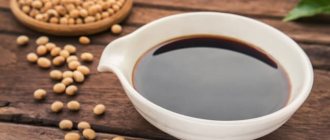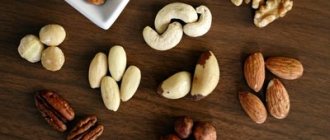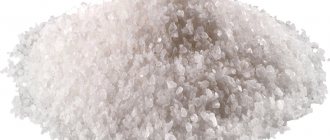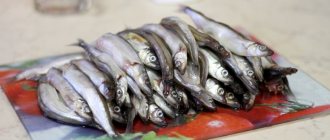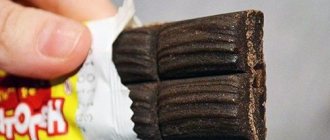More and more people who want to lead a healthy lifestyle are turning to soy sauce; it can enrich the taste of any dish. Can soy sauce help with weight loss? If you are seriously planning to lose weight, get ready to change your usual lifestyle to a new one. But you won’t have to change your life completely radically for this. Changing your diet will help you lose weight. Soy sauce can completely replace salt in a diet. This is an easy way to replace without sudden changes in gastronomic taste. Everything ingenious is simple!
What is soy sauce made from?
Many housewives wonder how to prepare such a dressing. However, this product is only the result of fermentation of soybeans. The process is facilitated by special fungi of the genus Aspergillus. The composition of soy sauce is beans, water, roasted wheat or barley flour. Preparation of a natural product can take a long time: from 40 days to 3 years. The beans are mixed with water, fried flour is added to the mixture, placed in a closed container, and left to ferment without access to oxygen. The taste, color, and consistency of the final product depend on the fermentation time.
Some manufacturers use different cooking technology. Its scheme is simple: soybeans must be cooked for some time in a strong inorganic acid (sulfuric or hydrochloric), then it is quenched with alkali (sodium hydroxide). Such a dressing will not cost much, but in terms of taste it will be significantly inferior to the natural one. Plus, the content of carcinogens in the product is too high. If such a counterfeit is added to food every day during cooking, the risk of malignant formations in the body will increase.
Due to its range of beneficial substances, soy sauce is recommended for vegetarians. It is known to contain a huge amount of antioxidants (10 times more than in red wine). Chemical composition of natural sauce:
- macroelements;
- microelements;
- essential amino acids;
- fat-soluble vitamins (A, E, D, K);
- all B vitamins.

Salt or soy
If desired, you can use soy sauce instead of regular salt, but remember that just 2-3 tablespoons of the sauce contains the daily value of sodium chloride. This corresponds to 2-3 g of salt.

If you still add salt to some dishes, you can safely consume no more than 1 tbsp per day. l sauce. And by completely eliminating additional salt, the amount of sauce can be increased to 2 tbsp. l.
Try not to overdo it, as exceeding the dosage of sauce causes fluid retention in the body and noticeable swelling.
The benefits and harms of soy sauce
Much is known about the benefits of Asian soy dressing for weight loss, because it contains a large number of biologically active substances that have a beneficial effect on the human body. A natural classic product can replace fatty, high-calorie mayonnaise. However, the dressing is not famous for its unique taste qualities. Benefits of soy sauce:
- thanks to the large amount of antioxidants, the human body ages later;
- consumption is the prevention of cancer;
- has a sedative effect, relieves headaches and insomnia;
- contains a large amount of protein that improves digestion;
- Recommended for use by people with heart disease, helps to recover after a heart attack.
Even considering the benefits of this product, it would be a mistake to consider the dressing as a medicine. A spicy addition to a dish can be harmful to the body, so you need to be extremely careful when using it. Abuse can be hazardous to health. Harm of soy sauce:
- carcinogens contained in cheap gas stations can lead to cancer;
- daily use carries a risk of hypertension and kidney stones, since the dressing contains a large amount of salt;
- suppression of reproductive function in men.
How much salt is in soy sauce
Not everyone is aware of the considerable salt content in soy sauce: per 100 grams of liquid dressing there are 4 grams of table salt. Experienced nutritionists and sports trainers advise taking it in food to maintain water-salt balance. This is especially important during periods of intense training. But when using soy dressing, you need to avoid salt (sea salt, table salt) in other dishes, otherwise there is a risk of kidney damage.

How many calories are in soy sauce
The product is low-calorie, so it can be safely consumed by those who are trying to lose weight or maintain a certain weight. The dressing contains no fat at all. The calorie content of soy sauce is only 50 kcal per 100 g. This serving contains 6 g of protein and 6.6 g of carbohydrates. It is advisable to use this product for people whose bodies cannot digest animal protein.
The product is harmful to the body: is soy to blame?
If we analyze soy sauce comprehensively, the benefits and harms for weight loss are often associated not with the plant itself and its properties, but with the principles of production of the product. The impeccable reputation of the oriental seasoning, nicknamed “black gold” in Europe even before man used oil, can only be ruined by unscrupulous manufacturers.
A low-quality, cheap product can contain a colossal amount of salt - up to 2 g per 1 tbsp. spoon. While a sauce made according to all standards contains it in a volume not exceeding 5.5-6.5%. Even good soy sauce should not be too much. Uncontrolled consumption may not lead to the long-awaited weight loss, but to tissue swelling.
The soybean fermentation process lasts 12 months or longer. To speed up this process, in some industries, sulfuric or hydrochloric acid is introduced into the product, which is quenched with alkali at the output. But all metabolites obtained during the reaction are not neutralized and enter the human body. Hence various poisonings, pain in the stomach, intestinal upset and allergic reactions instead of losing weight.
This fact does not mean that any Asian product on store shelves is harmful. The cheap, dark liquid in plastic bottles is nothing more than a diluted mixture of bean paste, salt, water, flavorings, dyes and stabilizers. It is better to avoid such seasoning, because there is no hint of a natural fermentation process.
Sometimes GMO plants are used illegally, which are very dangerous if used for a long time and regularly. This soy product is not just harmful - it poses a potential threat to human life!
Is it possible to have soy sauce on a diet?
When asking a trainer or nutritionist whether you can eat soy sauce on a diet, it’s easy to get different answers. A low-calorie product with a high content of vitamins, it has an excellent taste and is perfect as a dressing for hot dishes and salads. There are many sources that do not prohibit the use of soy sauce when losing weight. By replacing salt with dressing, you can remove excess moisture from the body. Please note that you can take no more than one tablespoon of natural soy sauce per day.
Buckwheat diet with soy sauce
You can use soy sauce on a diet when losing weight to season dishes. The most popular buckwheat diet among women lasts 14 days. During this period of time, it is necessary to consume boiled buckwheat daily without salt. Low-fat yogurt, kefir, small amounts of fruit (except bananas and grapes), still water, tea, coffee are allowed in the diet. The cereal is very healthy, a pleasant result will be visible in 2 weeks. Not everyone can give up salt; soy sauce is an excellent alternative for weight loss. They should season the buckwheat a little.
- Caprese salad - recipe step by step with photos. How to make a classic Italian Caprese salad
- Piracetam - indications for use and instructions
- What happens if you swallow a needle
Soy sauce on the Dukan diet
An ideal option for women who want to lose weight quickly is the Dukan diet. It defines 4 phases: Attack, Cruise, Consolidation, Stabilization. This protein diet is one of the most effective ways to lose weight without particularly limiting your diet. During the Attack phase, which lasts 3-10 days, you need to load your body with proteins, then the kilograms will disappear right before your eyes. You can eat as much as you like, but only permitted foods. The treasured list is topped by soy dressing. Further phases of the diet are aimed at consolidating the results.

Soy sauce on a salt-free diet
An effective way to lose weight by removing excess water from the body is a salt-free diet. The menu is varied, there are non-rich soups, lean meat (turkey, rabbit, chicken breast), different types of fish, fruits, vegetables, milk, eggs, jelly, compotes, jellies. The diet prohibits the addition of any salt to food. Eating bland food is unpleasant, but eating the fermented product of beans will save the situation. When losing weight, soy sauce can not only be used to season fresh vegetable salads, but also soups and stews.
Rice diet with soy sauce
The monocomponent rice diet helps you lose up to 5 kilograms of excess weight and make your body slim in just a week. The principle of this diet is simple. During the entire period of the diet, you need to eat only boiled rice, avoid salt and sugar. The only seasoning allowed is soy sauce. Each serving of prepared rice cereal should not exceed 100 g in weight. The diet includes vegetable broth, mushrooms, nuts, and fresh vegetables. It is important to drink liquid, the total volume of which should be 2 liters (including water, yogurt, kefir). This diet can be considered balanced.
Is it possible to harm losing weight?
Quite. It can only be applied by a cheap and therefore poorly prepared product. He can:
- contain some carcinogens;
- when consumed in large quantities, it has a positive effect on the inhibition of the reproductive function of the male body.
There are no special contraindications. Individual intolerance is possible.
Can soy sauce and weight loss be combined?
Many people think, is soy sauce good for losing weight? After all, it still contains salt. However, if used correctly, there will be no disruptions in the body. Neither with salt nor with water balance. After all, this is a healthy and useful product.
Soy sauce is an excellent dietary seasoning for a weight loss diet. In fact, it alone will replace not only salt in dishes, but also dressings for salads and other dishes. Just the sight of it lifts your spirits, and the most bland and tasteless dish is saturated with aroma and changes its taste. The answer is clear - how compatible!
How to choose a good soy sauce
Using simple rules, you can choose classic soy sauce for weight loss on supermarket shelves. A high-quality product guarantees a rich taste and will have a positive effect on the health of your body. This exotic supplement has a certain list of beneficial properties. In order not to fall for a fake, you need to learn to distinguish a classic sauce from a counterfeit one.
Simple recommendations will help you choose:
- Natural soy sauce won't come cheap. Choose a product from an expensive, well-known brand in a glass container.
- Inspect the packaging carefully. The label must be legible, not covered in glue, the expiration date must be visible and printed with a factory stamp.
- Please pay attention to the technology used to prepare the product you are purchasing. Buy one that is made through a natural fermentation process.
- Listen to the reviews of your friends.
- Look at the label for ingredients. There you should find natural beans (substitution with miso paste is allowed), water, flour and microorganisms that cause fermentation.

How can you replace salt during a diet?
The amount of salt in food should be reduced gradually. This will help the body avoid stress and breakdown.
To prevent food from seeming bland, you can replace regular salt with sea, Himalayan or iodized salt. It is suitable for the transitional stage, gives food a pleasant taste and aroma, and also contains useful substances.
This is interesting!
Regular salt undergoes processing, after which it loses most of its nutrients.
When losing weight, it is better to replace regular spices with sea spices. Large crystals are evaporated from sea water using a natural method. They are rich in more than 50 useful substances, including potassium, magnesium, and calcium.
An even better alternative is pink or black Himalayan salt from Pakistan. It smells nice, contains 84 microelements, but is expensive.
It will be useful for those losing weight to know whether salt can be replaced with soy sauce. This is possible, the main thing is to remember that this liquid also contains sodium chloride. It is also recommended to reduce the caloric content of the diet, reduce the amount of foods rich in salt and fat. A high-quality product based on natural ingredients is suitable for the diet.
You can replace table salt with kelp, celery, ginger, garlic, various spices, herbs, citrus-based marinades, natural vinegar, etc.
The optimal amount of salt substitute is 1 pinch per serving. At first, the food will seem a little bland, but over time the taste buds will get used to it.
Soy sauce
Soy sauce is especially popular among those losing weight. However, it already contains a little salt.
Important!
The optimal daily dose for weight loss or proper nutrition is up to 30 ml.
If you choose which is better - salt or soy sauce, then the second product definitely wins. It reduces the risk of cancer, rejuvenates the body, normalizes blood circulation, the functioning of the heart and blood vessels. Soy sauce is rich in amino acids, micro- and macroelements, and vitamins. But to get the benefits, you need to choose a high quality product. It contains nothing but soybeans, wheat, water, and a small amount of salt. If there are flavor enhancers, flavorings or other chemicals, the product should be discarded. The liquid has a rich aroma and taste.
Kelp
Sea kale, or kelp, is a brown algae that contains a lot of iodine. This supplement improves digestion, saturates cells with beneficial substances (laminarin, algin, ascorbic acid, B vitamins, macroelements). It is added to the diet for the prevention of endemic goiter, atherosclerosis, normalization of intestinal function in case of chronic constipation, colitis, proctitis, etc.
Kelp has a salty taste and marine aroma. Fresh or dried seaweed is suitable for those losing weight. A canned product is not suitable for this purpose, as it loses its beneficial properties after heat treatment.
Salads are often prepared from fresh seaweed; they can also be combined with vegetables, meat, fish, and seafood. Dry kelp is ground in a coffee grinder. The powder is sprinkled onto finished dishes. It is also soaked in water, and then cut and added to salads or other dishes.
Celery and ginger
Celery is an excellent substitute for salt - it is a flavorful vegetable with a negative calorie content. The product is rich in sodium, so it has a salty taste.
During a diet or proper nutrition, the plant is eaten fresh or dry. The vegetable stems are peeled, finely chopped and dried at a temperature of 42 degrees. For this purpose, it is most convenient to use a special dryer or dehydrator, which evenly dehydrates pieces of vegetables, maintaining a certain temperature regime.
Pieces of dry celery are stored in glass containers. Before use, it is crushed, and then the powder is sprinkled on finished dishes.
Celery is rich in nutrients and goes perfectly with salads.
Instead of regular salt, you can use ginger root. The fiery seasoning gives dishes a spicy taste.
When dieting, dishes are supplemented with fresh or dry ginger. In the first case, the root is peeled, cut into slices or crushed using a grater, in the second, it is chopped and dried. The dishes are also complemented with ground ginger. The spice tones the body, gives vigor, improves memory, concentration, and performance.
Garlic
Garlic will help make food taste richer without salt. This vegetable has a bright taste and aroma, especially when fresh.
Garlic is rich in vitamins, minerals, and antioxidants. When consumed regularly, it helps prevent a number of heart and vascular diseases. The vegetable has anti-inflammatory, moderate diuretic, anti-aging, and antitumor effects. It improves immunity and normalizes the functioning of the digestive tract.
Fresh garlic is sliced or pressed to complement prepared dishes. The dried vegetable has a milder taste, so it is more suitable for people who frequently come into contact with others. Often dishes are supplemented with garlic powder.
This is interesting!
A stalk of parsley or mint will help remove the aroma of garlic. To neutralize the unpleasant odor, use milk or freshly squeezed citrus juice.
Seasonings
When dieting or eating properly, salt is replaced with fragrant spices. They are aromatic, beneficial for the body, and add new notes of taste.
Seasonings that can replace salt:
- Bitterish dry onion powder has antibacterial and antifungal effects and improves immunity.
- Hot black pepper demonstrates anti-inflammatory, antioxidant effects, normalizes blood pressure, and relieves swelling.
- Spicy, bitter oregano is a natural antiseptic.
- Bittersweet, slightly spicy cumin will prevent atherosclerosis.
- Anise has a specific sweetish, refreshing taste and spicy aroma.
These seasonings perfectly complement meat, fish, vegetable dishes, desserts, and drinks.
You can replace salt with turmeric, cumin, rosemary, cilantro, coriander, thyme, dill, parsley, tarragon, etc. Dry vegetables, for example, tomatoes, paprika, mushrooms, and onions, perfectly complement dishes.
Lemon juice or natural vinegar
A universal salt substitute for weight loss is citrus fruits. Dishes are supplemented with zest, juice or pulp. Lemon juice is most often used to dress salads. It is often supplemented with spicy spices (cardamom, cumin, fennel, etc.). Lemon gives a pleasant sourness, freshness, and also saturates with vitamin C, cleanses the body of harmful accumulations.
Vinegar is no less popular for seasoning meat, fish, and vegetable dishes. When losing weight, you can supplement your food with apple, rice, wine, and balsamic vinegar. And fragrant herbs make the taste and aroma even more unique.
Carefully!
You should not overuse vinegar if you have stomach or intestinal diseases.
Contraindications
Not all fans of this dressing are aware of the contraindications of soy sauce. There is a reason for this: they are practically absent from the natural product. It is important to know that in some cases, dressing may cause allergies. The reason for this reaction is often individual intolerance to the components. It is undesirable to use spicy dressing:
- pregnant women, during breastfeeding;
- small children;
- people suffering from acute renal failure and disorders of water-salt metabolism.
The secrets of the calorie content of spicy sauce
Another point that is extremely important during the diet is the low calorie content of soy sauce.
100 grams of product contains only 50.7 kcal, and a tablespoon - no more than 2.7 kcal.
The glycemic index of soy sauce is also low - 20 units. This means that it does not cause sudden spikes in blood sugar and is perfect for a diet menu. For example, light salads from Beijing will be much tastier with soybean rather than with salt.
Eastern gas station
Surely everyone knows what soy sauce looks like and what taste it has. This slightly salty, viscous, oily liquid with a pungent, specific odor has spread widely throughout the world. It is indispensable when eating Japanese dishes (sushi and rolls).
Historical reference
Scientists say that soy sauce is an ancient product. It appeared in Ancient China. Religion obliged the monks to give up meat and dairy products.
And they began to get protein from soybeans. Over time, the vegetarian menu has expanded. Chinese monks began to prepare soy cheese and sauce.
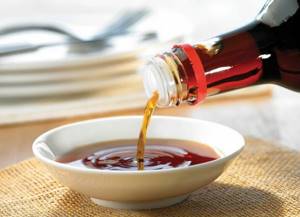
No one has ever found out in what century the soy product appeared. Historians have learned that over time the Japanese borrowed the recipe.
They modified it a little. The familiar taste of the sauce appeared in the 17th century. And three centuries later, the product was brought to Europe, from where it spread throughout the world.
What's true and what's a myth
Soy sauce is one of those food products around which there is so much incomprehensibility that real myths are born!
About soy and hormones
There is an opinion that soy sauce, like all soy products, is harmful to men's health due to the content of female hormones - estrogens. In fact, the amount of hormones in this product is very small, so soy sauce cannot affect potency or the possibility of “female type” obesity.
Carcinogens in sauce
But the myth that such sauce can be a dangerous carcinogen is actually true. But only if you use a chemically prepared product. Natural soy sauce, on the contrary, protects the body from free radicals and serves as a prevention of cancer.
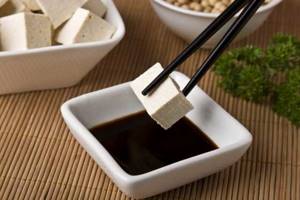
Opinions and reviews of nutritionists
If you are still not sure whether you can use soy sauce on pp, we offer you some advice from nutritionists who know a lot about proper weight loss.
Most experts advise adding a little lemon juice to soy sauce, which will give it a new taste and also help you lose weight.
Don't forget about product compatibility! Soy sauce is best added to salads, vegetable soups, buckwheat, rice, fish and meat dishes (for example, chicken roll). But in combination with milk, cheese or kefir, it can cause digestive upset.
Look for the “non-GMO” label on the packaging. Currently, the effect of genetically modified food on the human body has not been fully studied, therefore, while scientists are looking for evidence of the benefits and harms of GMOs, it is better not to take risks and limit the consumption of such food to a minimum.
Irina Polyanitsa My name is Irina, I am the owner and admin of the site, as well as the author of most of the recipes and articles. I love to cook simple and healthy delicacies. Certified gym instructor, personal trainer. She completed a course on nutrition and health at Stanford University, Stanford Introduction to Food and Health, as well as a course at Ludwig Maximilian University of Munich (LMU) Nutrition and Lifestyle in Pregnancy (about nutrition and lifestyle during pregnancy).
Positive properties of the sauce
In addition to the unusual taste, the product has particular benefits for both women and men. Soy sauce contains a significant amount of vitamin C. Moreover, there is more of it than in lemon or any other citrus. Thanks to the presence of ascorbic acid, the product is able to cope with many diseases. It can strengthen the immune system.
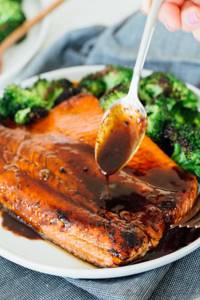
The main benefits of soy sauce include the following:
- reduces the number of free radicals, thereby preventing the appearance of tumors;
- significant protein content, which allows you to replace meat;
- an excellent alternative to table salt;
- improves blood circulation;
- normalizes blood pressure;
- speeds up metabolism;
- increases stress resistance;
- slows down the aging process;
- prevents heart disease and sauces;
- promotes the absorption of nutrients from vegetables and fruits;
- relieves headaches;
- has low calorie content.
Only soy sauce, which has a natural composition, will benefit the body. Many doctors advise taking the product constantly as a medicine.
Main conclusions
- This authentic Japanese food supplement contains only 3 ingredients – soy, salt and wheat. Spices, sugar, preservatives are signs of a fake product.
- Natural sauce is introduced into the diet in quantities of up to two tablespoons.
- The supplement is not included in the menu if there are disorders of the thyroid gland. Children under 3 years of age and pregnant women are also prohibited from consuming this product.
- It is preferable to eat dishes with soy sauce in the first half of the day, since the spicy liquid is rich in salt.
- If you have diseases of the cardiovascular, urinary, or endocrine systems, before you start consuming soy sauce, especially on a diet, it is recommended to consult your doctor, because in some cases its use can have a negative impact on your health.
